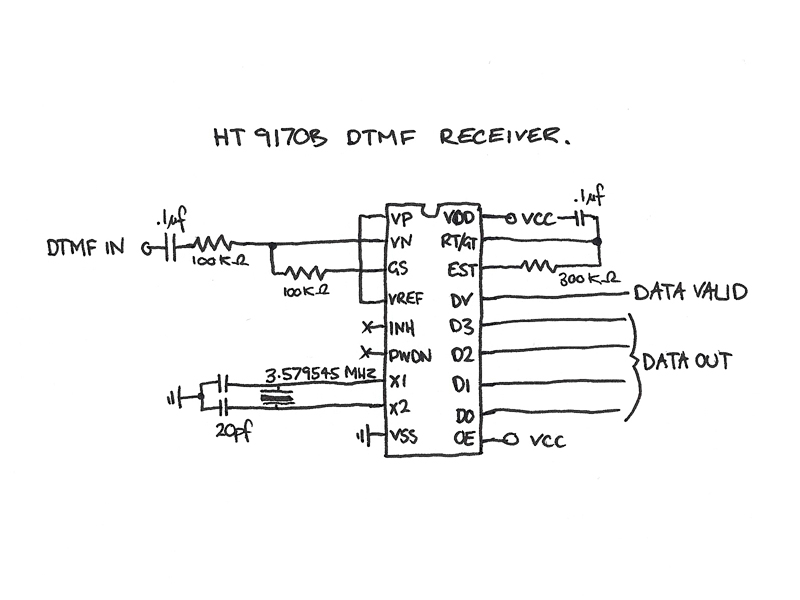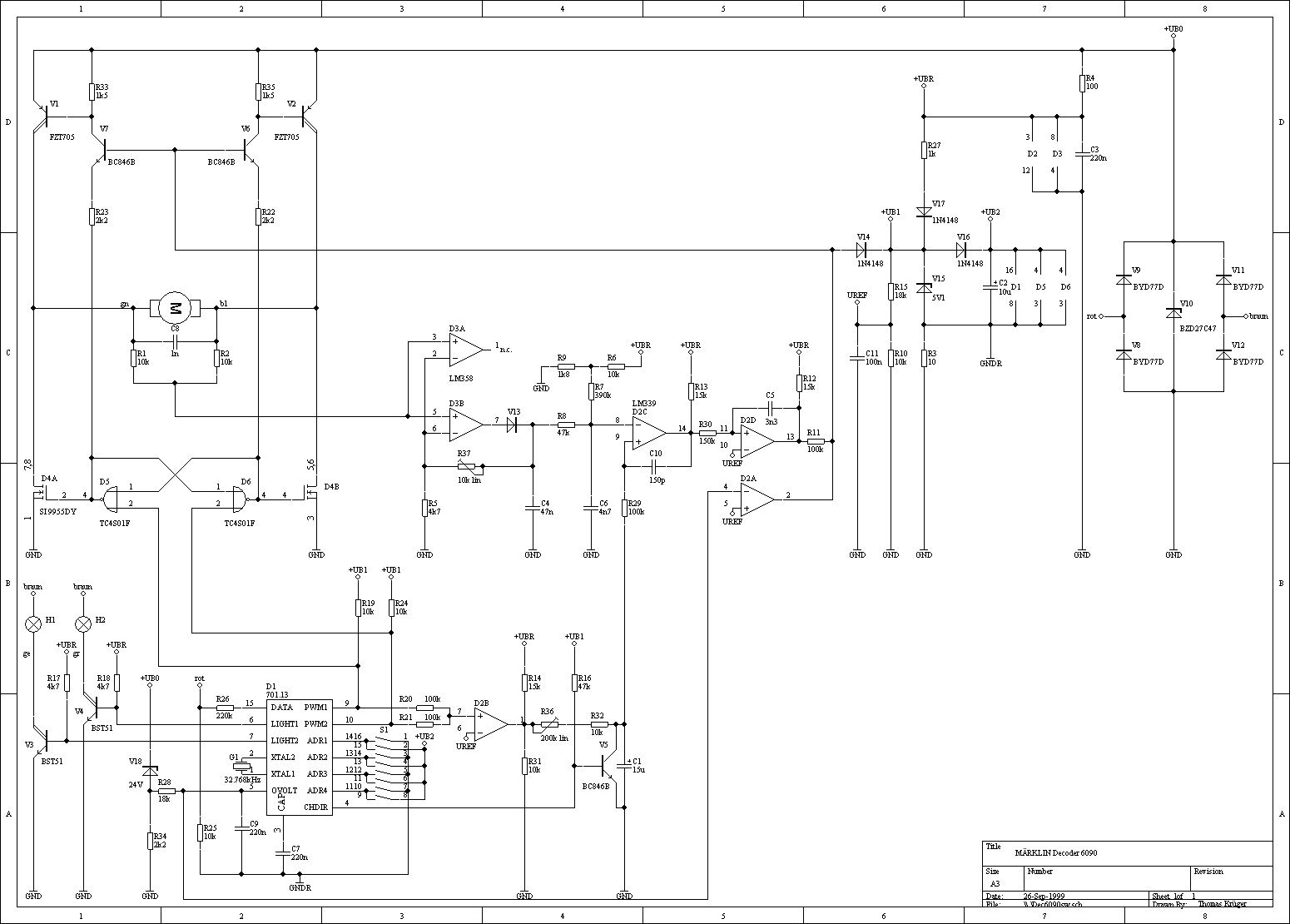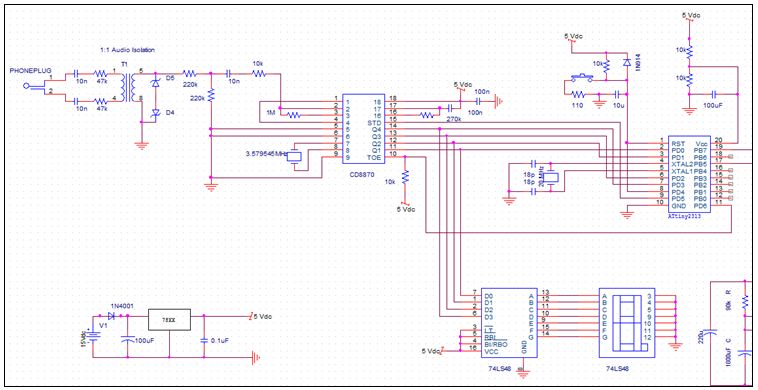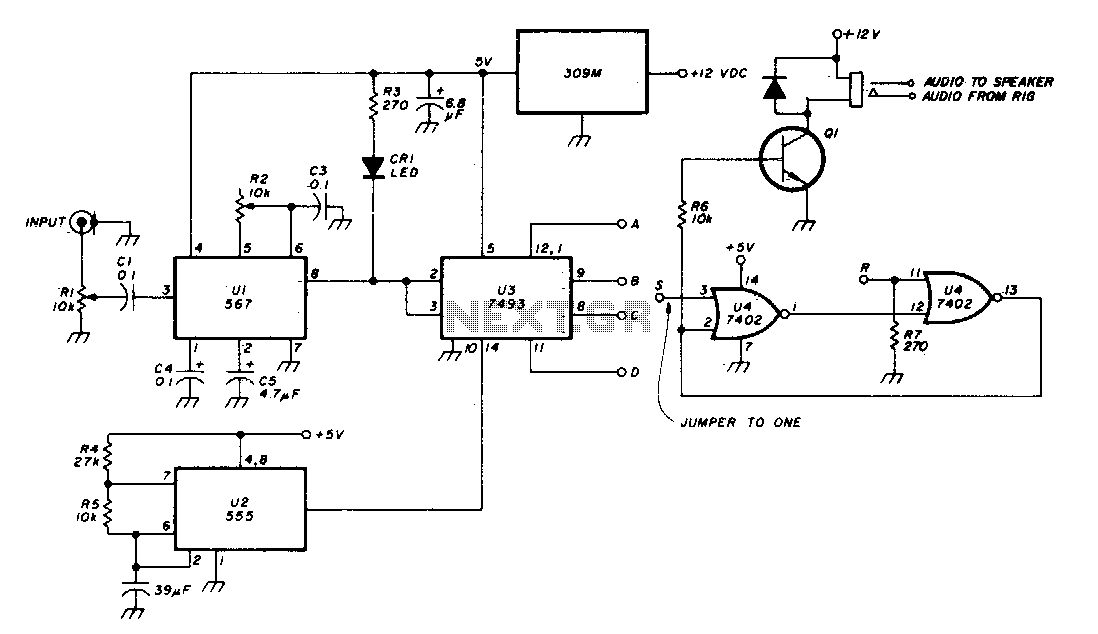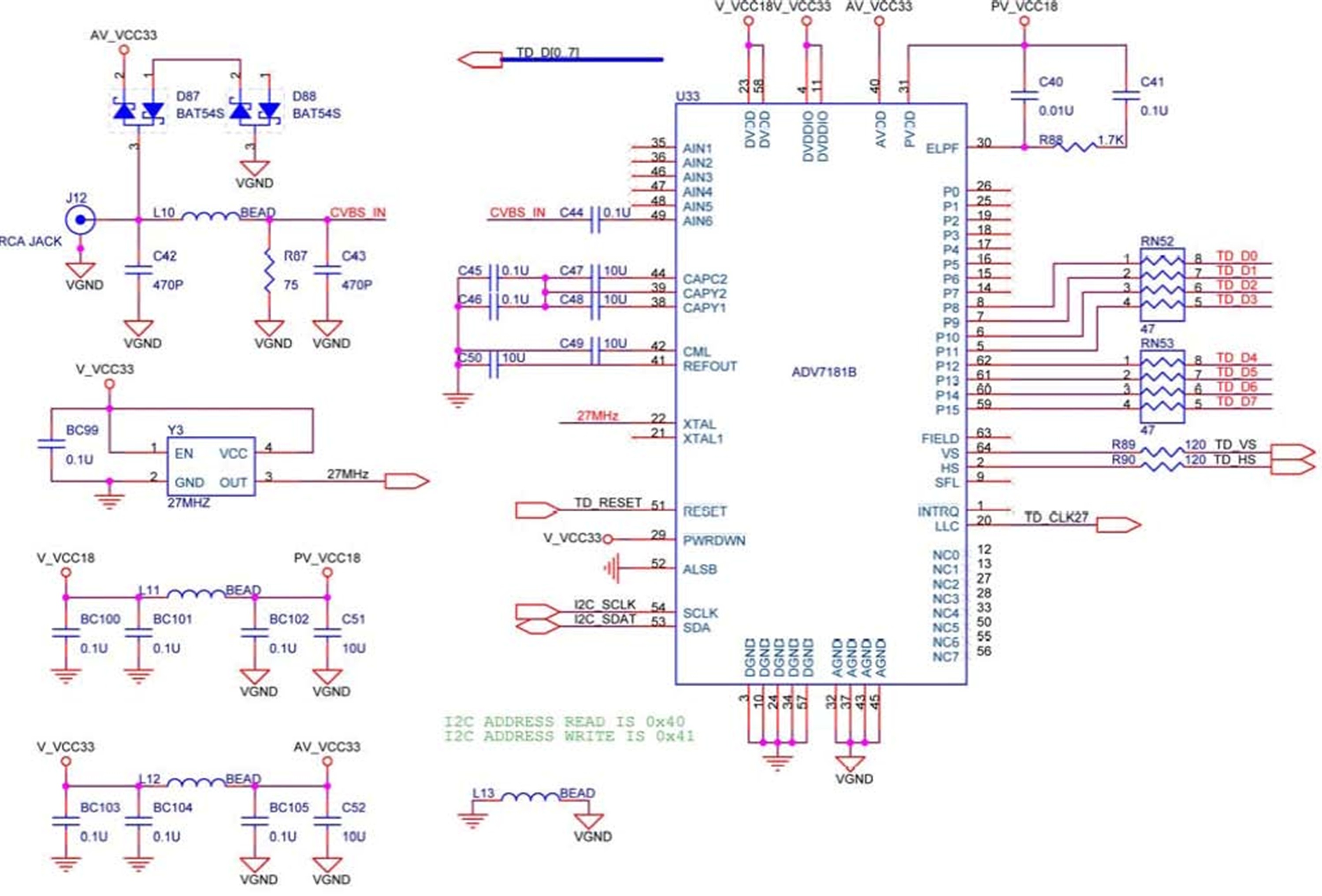
DTMF Decoder 2
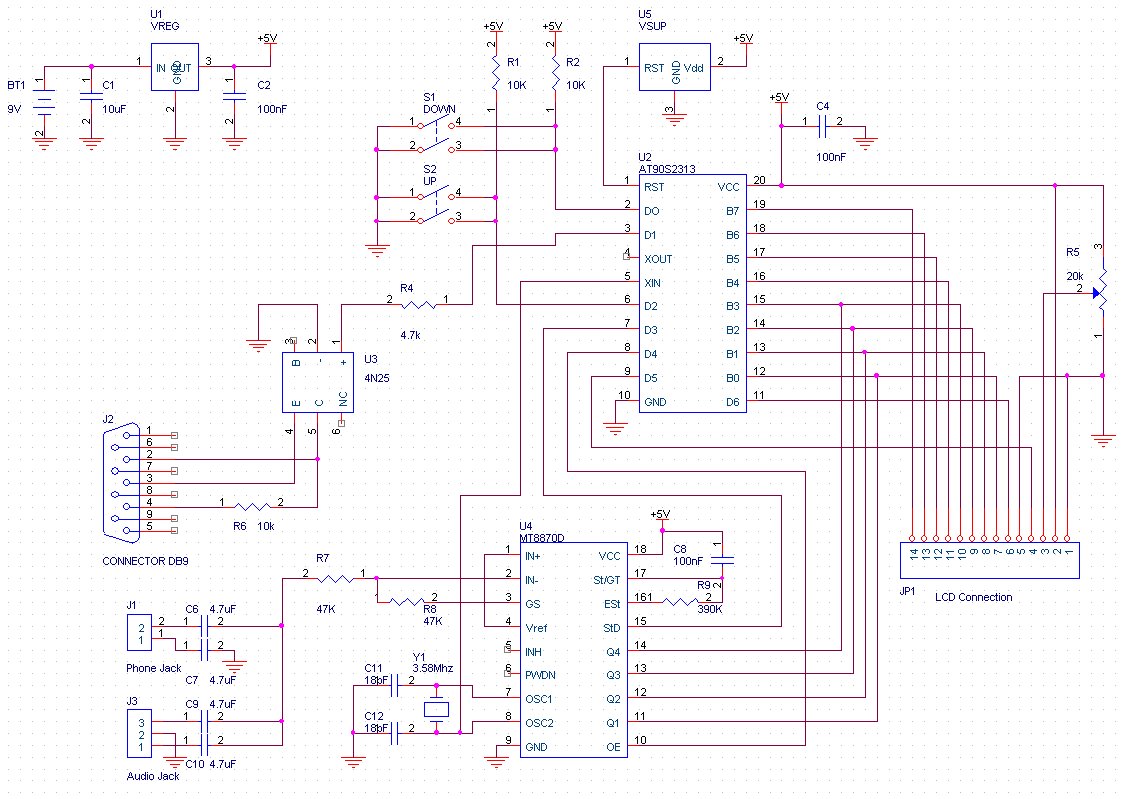
This device and all information contained on this website is for educational purposes only. This device must be used in conjunction with any and all local, provincial, and federal laws. It is the responsibility of the end user to comply with all legal guidelines; therefore, the manufacturer is not responsible for any misuse of this product or any damages that may occur. The DTMF decoder 2 is a useful tool for decoding DTMF (Dual Tone Multi-Frequency) signals generated by telephones. The decoded digits are displayed on a 16x2 LCD screen. The DTMF decoder can be directly connected to a serial port to view the digits in HyperTerminal on a computer. The decoder stores the last 234 received digits in EEPROM, which can be viewed on the LCD screen using two scroll buttons. The total power consumption is 12mA. The DTMF decoder has two inputs: an RJ11 jack for connecting to the phone line and a 1/8" audio jack for connecting to a scanner, tape recorder, or other audio output device. A PCB layout is provided for those who wish to construct their own PCB. The layout can be printed at a 1:1 scale onto an overhead transparency suitable for the printer type. A kit from MG Chemicals (E-Sonic, part number 416-K) was used to produce the PCB. The smallest traces on the provided PCB layout are 15 thousandths of an inch wide. Drill holes for the headers at 40 thousandths, for the 20K potentiometer, buttons, and audio jack at 35 thousandths, and for the remaining holes at 30 thousandths. Drill bits can be found at most hobby stores. It is advisable to review the schematic and parts placement diagram before assembly to ensure the proper orientation of integrated circuits (ICs) and capacitors. Begin assembly by installing the seven jumper wires, followed by soldering in all resistors and capacitors. Next, solder the buttons, phone and audio jack, 20K potentiometer, and crystal. Then, solder the 20-pin socket, ICs, and 9V battery connector. The DB-9 connector should be soldered to the end of the PCB, with pins 7 and 8 bridged together with solder. After this, connect power and test the decoder for +5V between pins 10 and 20 on the 20-pin socket. Finally, install the two seven-pin headers into the LCD (with the short side facing the LCD) and solder the longer side of the headers into the DTMF decoder PCB. The LCD and decoder can be attached using hot glue or other suitable methods.
Programming the microcontroller is the next step. The microcontroller used is the AVR AT90S2313 manufactured by ATMEL, and an AVR socket programmer is required. A list of suitable programmers is available, and one can also create a custom AVR socket programmer. It is recommended to replace D1 with a 1N5817 diode and use a 20-pin DIP 0.3" socket instead of the 10-pin connector. A crystal must be connected between pins 4 and 5, and power must be supplied to the microcontroller. Instructions for this process are provided with the specific programmer. If a custom socket programmer is created, Pony Prog, which is free programming software, can be used. The microcontroller should be installed into the DTMF decoder, and upon powering up the device, the contrast should be adjusted until the message "DTMF Decoder" appears on the screen. It is important to note that if the ATTINY2313 is used, the fuse setting should be configured for "external oscillator, 3-8 MHz, 64ms startup time," ensuring that the fuse setting "Divide clock by 8" is not enabled. The program is written in C and consists of one C file intended to be compiled under the free AVR-GCC C compiler (WinAVR version 3.4.3, released February 14, 2005). A beginner's guide is available for those who need assistance with installing GCC. Once GCC is operational, the Project Files for Programmers NotePad can be downloaded and extracted to a chosen directory. Running Programmers NotePad (located at /WinAVR/pn/pn.exe), the user should navigate to "File->Open Project(s)" and select "dtmf2.pnproj" from the directory where "dtmf2.zip" was unzipped. Opening "dtmf2.c" by double-clicking will allow the user to test the compiler by clicking "Tools->Make All." The program is well-documented and self-explanatory. To utilize the DTMF decoder, it should be connected to a 9V battery and the phone line. The DTMF decoder is capable of accepting isolated DC voltages ranging from 7 to 20V for power. Upon power-up, the device will be ready for operation.This device and all information contained on this website is for educational purposes only. This device must be used in conjunction with any and all local, provincial and federal laws. It is up to the end user to comply with all legal guidelines, thus we are not and will not be held responsible for any misuse of this product or any damages that it may cause. The DTMF decoder 2 is a useful tool used for decoding DTMF (Dual Tone Multi frequency) generated by telephones. The decoded digits are viewed on a 16x2 LCD screen. The DTMF decoder can be directly connected to a Serial port to view the digits in HyperTerminal on a computer.
The decoder stores the last 234 received digits in EEPROM. The contents of EEPROM can be viewed on the LCD screen via two scroll buttons. Total power consumption is 12mA. The DTMF decoder has two inputs. A RJ11 jack for connecting to the phone line and a 1/8" audio jack for connecting to a scanner, tape recorder or other audio output device. A PCB layout is provided if one wishes to construct their own PCB. Simply print the file at 1:1 onto an overhead transparency. (Get the correct sheet for your type of printer) I used a kit by MG Chemicals ( E-Sonic Search for 416-K) to produce my PCB.
The provided PCB layout`s smallest traces are 15 thou wide. Drill the holes for the headers at 40 thou. Drill the holes for the 20K POT, the buttons, and the audio jack at 35 thou. Drill the rest of the holes at 30 thou. Drill bits can be found a most hobby stores. Review the schematic and parts placement diagram before beginning assembly for proper orientation of ICs and capacitors. Begin by installing the 7 jumper wires. Next solder in all the resistors and capacitors. Then solder in the buttons, the phone and audio jack, the 20K POT and the crystal. Solder in the 20 pin socket, ICs and 9v battery connector. Next solder the DB-9 connector to the end of the PCB. Short pins 7 and 8 on the DB-9 together by bridging them with solder. At this point, connect power and test the decoder for +5V between pins 10 and 20 on the 20 pin socket.
Finally install the two, seven pin headers into the LCD (short side towards LCD). Solder the longer side of the headers into the DTMF decoder PCB. Attach the LCD and decoder together with hot glue or other means. Programming the microcontroller is the next step. The micro is a AVR AT90S2313 made by ATMEL. An AVR socket programmer is required. Here is a list of programmers. Make you own AVR Socket Programmer. Replace D1 with a 1N5817 and use a 20-pin DIP 0. 3" socket instead of the 10 pin connector. You will have to connect a crystal between pins 4, 5 and supply power. to the micro. Instructions are provided with the specific programmer. If you make your own Socket programmer, use Pony Prog which is free Programming software. Install the micro into the DTMF decoder. Power the decoder up, adjust the contrast, and the message "DTMF Decoder by should appear on the screen. NOTE - If you are using the ATTINY2313, set the Fuse setting "external oscillator, 3-8 Mhz, 64mS startup time".
Make sure that the Fuse setting "Divide clock by 8" is NOT set. The program is written in C. It consists of one C file and was written to be complied under the free AVR-GCC C compiler (WinAVR 3. 4. 3 February 14, 2005). Read the beginners guide to learn how to install GCC. Once you have GCC working, download the Project Files for Programmers NotePad. and unzip them to a directory of your choosing. Run Programmers NotePad ( /WinAVR/pn/pn. exe). In PN go "File->Open Project(s)" and select "dtmf2. pnproj" in the directory where you unzipped "dtmf2. zip". Open "dtmf2. c by double clicking on it. Click "Tools->Make All" to test the Compiler. The program is well documented and self explanatory. To use the DTMF decoder, simply connect it to a 9V battery and the phone line. The DTMF decoder will accept ISOLATED DC voltages from 7 to 20 V for power. Upon power up 🔗 External reference
Programming the microcontroller is the next step. The microcontroller used is the AVR AT90S2313 manufactured by ATMEL, and an AVR socket programmer is required. A list of suitable programmers is available, and one can also create a custom AVR socket programmer. It is recommended to replace D1 with a 1N5817 diode and use a 20-pin DIP 0.3" socket instead of the 10-pin connector. A crystal must be connected between pins 4 and 5, and power must be supplied to the microcontroller. Instructions for this process are provided with the specific programmer. If a custom socket programmer is created, Pony Prog, which is free programming software, can be used. The microcontroller should be installed into the DTMF decoder, and upon powering up the device, the contrast should be adjusted until the message "DTMF Decoder" appears on the screen. It is important to note that if the ATTINY2313 is used, the fuse setting should be configured for "external oscillator, 3-8 MHz, 64ms startup time," ensuring that the fuse setting "Divide clock by 8" is not enabled. The program is written in C and consists of one C file intended to be compiled under the free AVR-GCC C compiler (WinAVR version 3.4.3, released February 14, 2005). A beginner's guide is available for those who need assistance with installing GCC. Once GCC is operational, the Project Files for Programmers NotePad can be downloaded and extracted to a chosen directory. Running Programmers NotePad (located at /WinAVR/pn/pn.exe), the user should navigate to "File->Open Project(s)" and select "dtmf2.pnproj" from the directory where "dtmf2.zip" was unzipped. Opening "dtmf2.c" by double-clicking will allow the user to test the compiler by clicking "Tools->Make All." The program is well-documented and self-explanatory. To utilize the DTMF decoder, it should be connected to a 9V battery and the phone line. The DTMF decoder is capable of accepting isolated DC voltages ranging from 7 to 20V for power. Upon power-up, the device will be ready for operation.This device and all information contained on this website is for educational purposes only. This device must be used in conjunction with any and all local, provincial and federal laws. It is up to the end user to comply with all legal guidelines, thus we are not and will not be held responsible for any misuse of this product or any damages that it may cause. The DTMF decoder 2 is a useful tool used for decoding DTMF (Dual Tone Multi frequency) generated by telephones. The decoded digits are viewed on a 16x2 LCD screen. The DTMF decoder can be directly connected to a Serial port to view the digits in HyperTerminal on a computer.
The decoder stores the last 234 received digits in EEPROM. The contents of EEPROM can be viewed on the LCD screen via two scroll buttons. Total power consumption is 12mA. The DTMF decoder has two inputs. A RJ11 jack for connecting to the phone line and a 1/8" audio jack for connecting to a scanner, tape recorder or other audio output device. A PCB layout is provided if one wishes to construct their own PCB. Simply print the file at 1:1 onto an overhead transparency. (Get the correct sheet for your type of printer) I used a kit by MG Chemicals ( E-Sonic Search for 416-K) to produce my PCB.
The provided PCB layout`s smallest traces are 15 thou wide. Drill the holes for the headers at 40 thou. Drill the holes for the 20K POT, the buttons, and the audio jack at 35 thou. Drill the rest of the holes at 30 thou. Drill bits can be found a most hobby stores. Review the schematic and parts placement diagram before beginning assembly for proper orientation of ICs and capacitors. Begin by installing the 7 jumper wires. Next solder in all the resistors and capacitors. Then solder in the buttons, the phone and audio jack, the 20K POT and the crystal. Solder in the 20 pin socket, ICs and 9v battery connector. Next solder the DB-9 connector to the end of the PCB. Short pins 7 and 8 on the DB-9 together by bridging them with solder. At this point, connect power and test the decoder for +5V between pins 10 and 20 on the 20 pin socket.
Finally install the two, seven pin headers into the LCD (short side towards LCD). Solder the longer side of the headers into the DTMF decoder PCB. Attach the LCD and decoder together with hot glue or other means. Programming the microcontroller is the next step. The micro is a AVR AT90S2313 made by ATMEL. An AVR socket programmer is required. Here is a list of programmers. Make you own AVR Socket Programmer. Replace D1 with a 1N5817 and use a 20-pin DIP 0. 3" socket instead of the 10 pin connector. You will have to connect a crystal between pins 4, 5 and supply power. to the micro. Instructions are provided with the specific programmer. If you make your own Socket programmer, use Pony Prog which is free Programming software. Install the micro into the DTMF decoder. Power the decoder up, adjust the contrast, and the message "DTMF Decoder by should appear on the screen. NOTE - If you are using the ATTINY2313, set the Fuse setting "external oscillator, 3-8 Mhz, 64mS startup time".
Make sure that the Fuse setting "Divide clock by 8" is NOT set. The program is written in C. It consists of one C file and was written to be complied under the free AVR-GCC C compiler (WinAVR 3. 4. 3 February 14, 2005). Read the beginners guide to learn how to install GCC. Once you have GCC working, download the Project Files for Programmers NotePad. and unzip them to a directory of your choosing. Run Programmers NotePad ( /WinAVR/pn/pn. exe). In PN go "File->Open Project(s)" and select "dtmf2. pnproj" in the directory where you unzipped "dtmf2. zip". Open "dtmf2. c by double clicking on it. Click "Tools->Make All" to test the Compiler. The program is well documented and self explanatory. To use the DTMF decoder, simply connect it to a 9V battery and the phone line. The DTMF decoder will accept ISOLATED DC voltages from 7 to 20 V for power. Upon power up 🔗 External reference
Warning: include(partials/cookie-banner.php): Failed to open stream: Permission denied in /var/www/html/nextgr/view-circuit.php on line 713
Warning: include(): Failed opening 'partials/cookie-banner.php' for inclusion (include_path='.:/usr/share/php') in /var/www/html/nextgr/view-circuit.php on line 713
